One of the most famous domes in the world is the dome of the Duomo (the Basilica di Santa Maria del Fiore) that dominates Florence, Italy. This brick red and white dome is the shining achievement of Early Renaissance architecture. It’s not an ordinary dome that you might see in any historic city— the ingenuity behind it paved the way for the creativity of Renaissance architecture and therefore the architecture of the modern age.
A bit of understanding of this dome’s fascinating history will make any visit to Florence much richer. These 4 tips to understanding the dome will enrich your visit to Florence’s most famous church.
1) This was something almost entirely new.
This was the largest dome built since the Pantheon in Rome about 1300 years earlier and one of very few domes built since that time. It was also the tallest dome built until that time. The size and newness of the project made it a seemingly impossible feat.
When the basilica was finished in the late 1300s, it stood open, without a dome. It was agreed that the basilica would not use buttresses, which had been used in Gothic architecture in much of Europe. Florence’s decision not to use buttresses to support the ceiling and dome of the church was an important break from tradition to the new thinking of the Renaissance.
However, how such an enormous dome would be supported was a mystery. The size of the hole in the basilica that it was meant to cover presented a huge architectural challenge. This was heightened by the collapse of part of the cathedral being built in neighboring Siena—all of Florence knew of this embarrassing failure, making the success of this dome even more important.
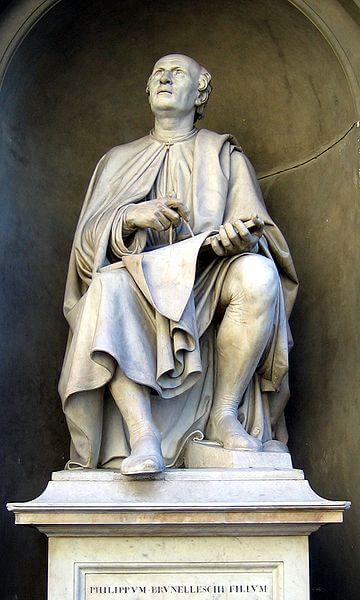
2) The architect who designed the dome became the leading architect of the Early Renaissance.
Filippo Brunelleschi won the competition to become the architect of the dome. His vision to emulate the structures of Ancient Rome while introducing new techniques and inventions made him the foremost architect of the first half of the Renaissance. His designs can be seen all around Florence and celebrate the shapes and proportions of Renaissance aesthetics.
Behind Brunelleschi’s achievements is a genius whose vision during these early years of the Renaissance helped lay the foundation that so many artists would build on.
3) The design and construction of the dome involved much more than what we see with our eyes.
Brunelleschi’s design for the dome involved risky new techniques, including the invention of a “double-dome” and machines for lifting the huge stones and other materials more than 300 feet in the air. He created a criss-crossing method of laying bricks that distributed the weight and therefore allowed the dome to support itself without the use of what would have been an entire forest of timber to support it. His method of interlocking bricks and using both an inner and outer dome was revolutionary. Walking up to the top of the dome allows you to see this double shell up close.
4) The dome symbolized the spirit of human potential and the hope for a brighter future.
Construction of the dome began in 1420 and was finished 16 years later in 1436. The 1300s and early 1400s were tumultuous times, including wars, devastating plagues, and political instability. I can only imagine what it must have been like for the people living in Florence, having survived the Black Death of the 14th century and now seeing this beautiful dome being erected over their city. The resourcefulness and creativity required of this enormous project symbolized the beginning of a new era for Florence, not just for art but also for its people.
Tip: For great views of the dome, climb Giotto’s Campanile and look directly onto the dome.
If you’d like to know more: PBS produced a 4-part documentary series about the Medici, and Part 1 covers the dome’s construction in fascinating detail. You can watch it on Netflix Instant or for free on Hulu.com. Netflix just started streaming a new series, “Medici: Masters of Florence,” which puts the dome in historical perspective.
Source for some facts: History of Italian Renaissance Art by Frederick Hart. Photos 2, 3, 4 are from Wikipedia Commons.

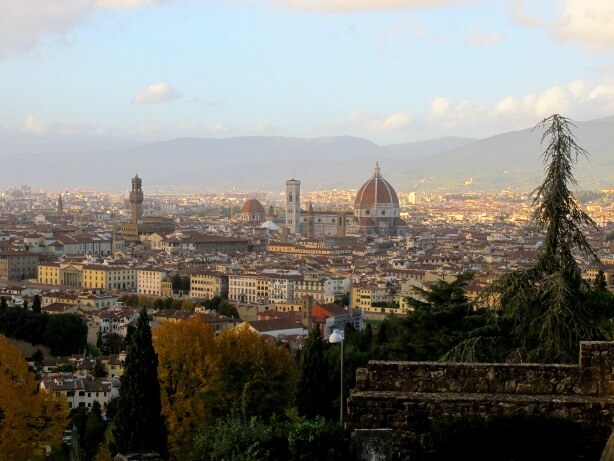
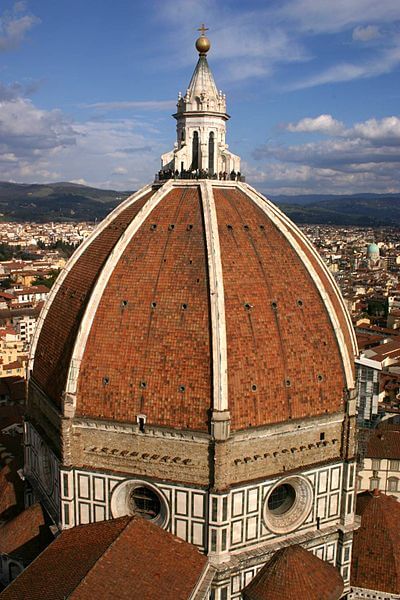
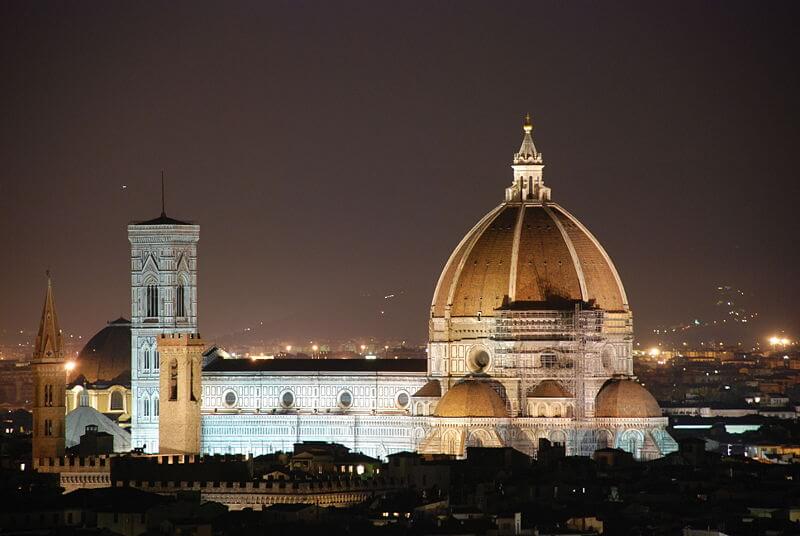
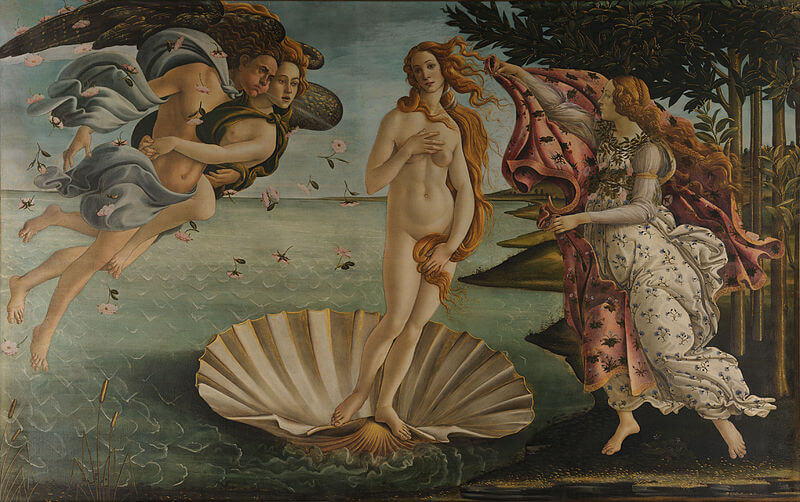
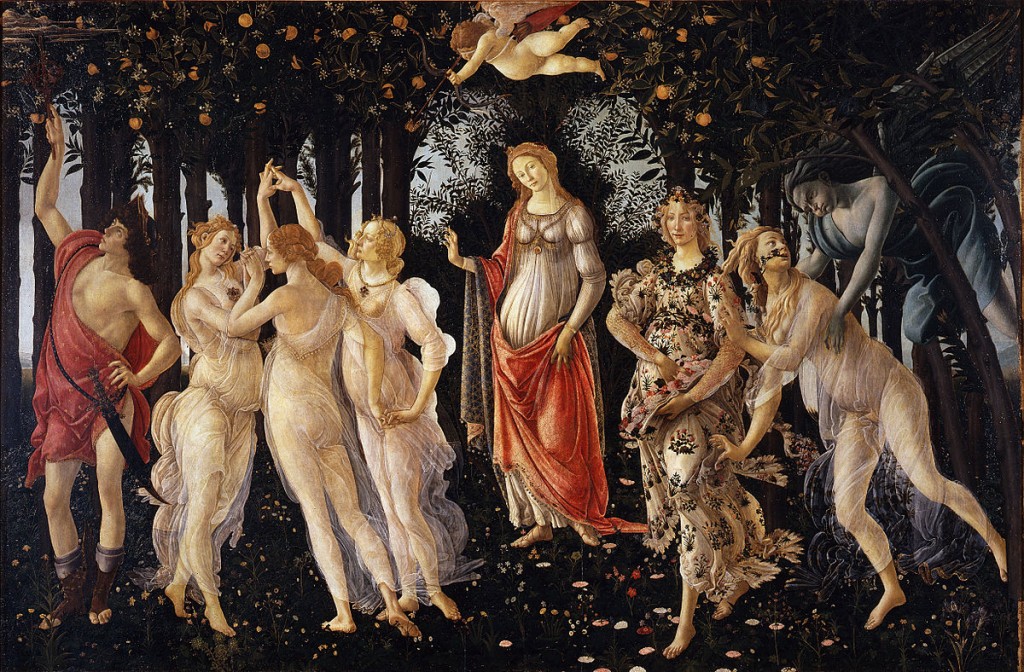
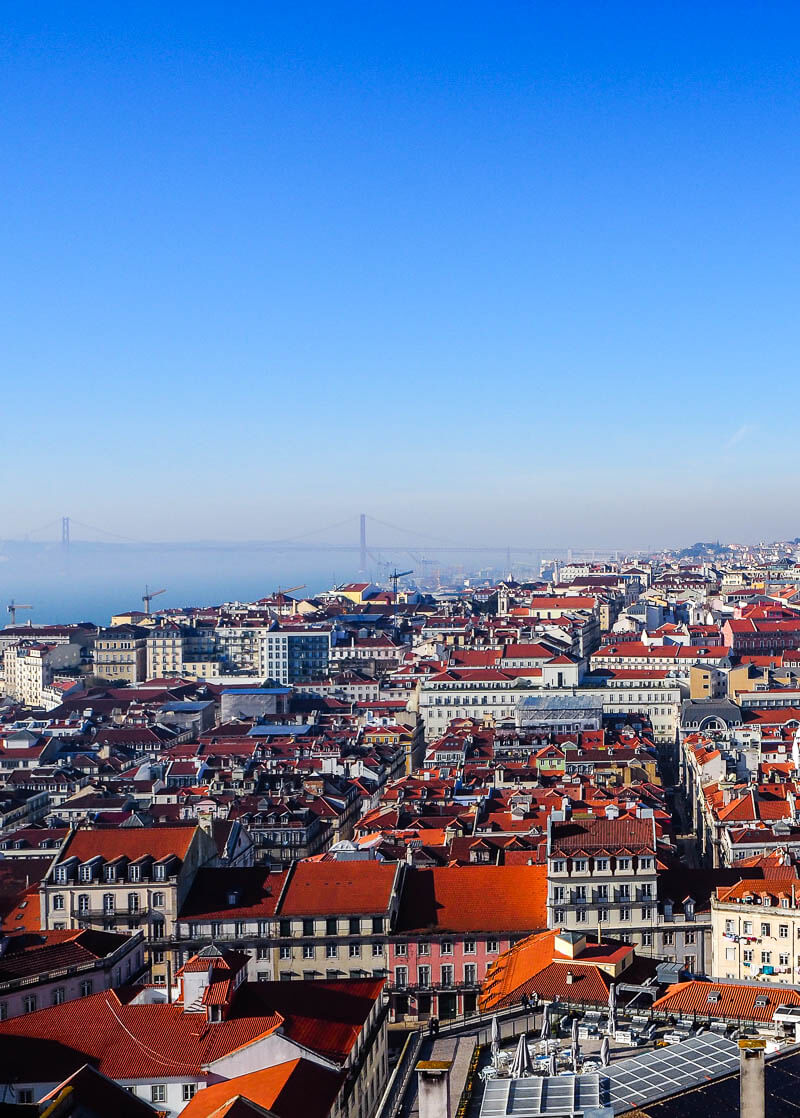
Ah, a dome I know very well ; ) I never tire of reading about Brunelleschi’s ingenuity and his dome-within-a-dome construction. Truly, it makes for a fascinating read over and over again. I would have loved to see this in person all those years ago to bear witness to its construction. Thanks for sharing this fascinating story and great pics too!
I also never tire of reading about Brunelleschi! We are truly Renaissance obsessed! 😉
Ah, domes!
Was the source not counting Hagia Sophia’s dome because it rested on pendentives rather than a drum attached directly to the walls?
I remember this was the first church I studied in my Renaissance architecture class, and I always love looking at the herringbone brick pattern. Forgot it was a double shell! One day, I’ll see it in person.
Thanks for asking about the dome and Hagia Sophia (which is a dome I must see in person one day!). I changed the text to read the largest, not first, dome since the Pantheon. I should have caught that, but I did write this on Christmas after all 🙂
What a magnificent building! I love interesting architecture.
Always so thrilling to read about gamechangers who thought completely outside of the box!
Beautiful selection of ceilings and domes. Very clever your choice of Brunelleschi looking up at his dome.
Enjoyed the photos and the informative article, Jenna. Such a beautiful dome (and city), isn’t it…
Beautiful city Florence, I’ve been there only once and long time ago, might be time to go back 🙂
Such a beautiful city I lived in Florence for 2 months such an amazing place
Lucky you! I agree, it’s amazing.
Jenna,
Wonderful to see how you move from travel into history and art so eloquently. I have to admit that we never visited Florence (yet!). We have been to Rome but still have to discover these great places in Italy.
Are you going to organize art tours to Florence? Great!
Thanks, Emiel. Yes, I will organize art tours to Florence and other areas of Italy as it’s something I’ve wanted to do for many years and I know quite a bit about Italian art history & architecture. I am in the very early planning stages now.
As I read, I though about the documentary. This is a wonderful write up. Thanks for the tour of this amazingly beautiful place.
You’re so welcome! Glad you enjoyed it.
This Country are Lucky who have this kind of Domes and I really Enjoy To read this blog and I love that places Absolutely beautiful and Amazing and Photos are Good for Pinterest can i pin it for you ??
Of course you can